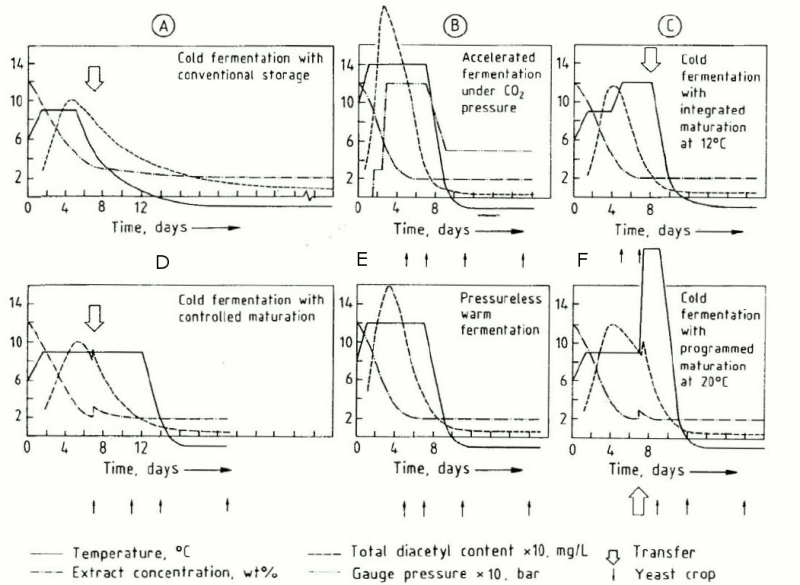brewmonger
Well-Known Member
- Joined
- Jul 14, 2008
- Messages
- 169
- Reaction score
- 6
Besides storage, what is the purpose of lagering beer?

Several important groups of compounds have been identified as changing during the
maturation of beer with consequent positive effect on beer flavour. The most important
are: diketones (especially diacetyl), sulphur compounds, aldehydes, and volatile fatty
acids.
I believe the more sugars that have been fermented (higher gravity), the more of the compounds I mentioned above (plus more potential for higher alcohols, which get reduced to other compounds during lagering), hence the need for longer lagering. There may be more to it than that though.And why do you have to lager big beers for a longer time, where you can lager an American lager for 2-3 weeks and thats plenty ?
Perhaps this has something to do with it: colloidal stabilization. (Lower temperatures promote colloidal stabilization.)And also why does it have to be so cold for lagering, other than the obvious fact that it causes more of the yeast to fall out ?
Can you shed some light on this?
If your fermentation is not complete, i.e. diacetyl not sufficienctly reduced or the amount of residual fermentable sugars is still to high for the style, when you lower the temp to lagering you'll have to lower the temp gradually in order to keep the yeast as active as possible. But if this is not the case, which is generally the case with the extended primary fermentation or the warm diacetyl rest, then there is no need for that. This is one of the aspects that is incorrectly explained in Parmer's and Noonan's books.
Kai, I seem to recall you saying you go straight to lagering temps after primary fermentation has concluded rather than stepping down incrementally over a period of time before reaching lagering temperatures. Can you shed some light on this?
Jason
A sudden fall in temperature must be avoided or the shock may induce the yeast to excrete protease enzymes that could be detrimental to foam stability.
Here's a quote from BS&P 15.2.3 Lager Methods regarding reducing the temp to lagering temps:

I'm still on the quest of brewing a lager w/ only one week of primary fermentation, one week of gradual chilling and 4 weeks of lagering. I wonder how much better this is for the taste of the beer compared to the home brewing standard of long primary w/ or w/o warm diacetyl rest.
Kai

But I have made beers with my "crash to lager method" that have a foam that doesn't want to go away.
I can understand that. Reading into the quote from BS&P, it doesn't sound absolute. Those key words like "may" and "could" (stand out to me, working in consulting) make me wonder what other factors are at play for that to happen.
I'm still on the quest of brewing a lager w/ only one week of primary fermentation, one week of gradual chilling and 4 weeks of lagering. I wonder how much better this is for the taste of the beer compared to the home brewing standard of long primary w/ or w/o warm diacetyl rest.
Kai
Enter your email address to join: